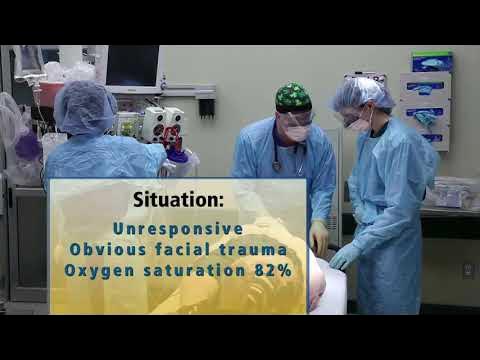EMT Skills: Spinal Immobilization Seated Patient - EMTprep.com
Summary
TLDRThe video presents a practical assessment of spinal immobilization for a seated patient involved in a motor vehicle accident. It outlines the EMT's systematic approach, starting with ensuring scene safety and performing a circulation, sensation, and motor function (CMS) assessment. The EMT applies a cervical collar and positions a KED device while collaborating with an assistant. Key steps include securing the patient with straps while maintaining spinal alignment and conducting a final CMS reassessment. This structured method emphasizes the importance of patient safety during transport and showcases essential EMT skills.
Takeaways
- 😀 Proper spinal immobilization is crucial for patients involved in motor vehicle accidents.
- 😀 Begin by ensuring that the scene is safe and BSI (Body Substance Isolation) is established.
- 😀 Maintain inline neutral positioning of the patient's head to stabilize the cervical spine.
- 😀 Conduct a quick assessment of Circulation, Motion, and Sensation (CMS) in all extremities.
- 😀 Size and apply a cervical collar appropriately before positioning the KED device.
- 😀 Carefully position the KED device behind the patient without moving the spine excessively.
- 😀 Secure the torso with the KED device while ensuring minimal spinal movement.
- 😀 Attach the ischial straps securely between the patient's legs for additional stability.
- 😀 Pad behind the head as necessary to secure the head appropriately to the KED device.
- 😀 After securing the patient to a long backboard, reassess CMS to confirm continued stability.
Q & A
What is the primary purpose of the spinal immobilization skill demonstrated in the video?
-The primary purpose is to properly secure a seated patient involved in a motor vehicle accident to prevent further injury, particularly to the spine.
What initial assessment should be conducted before immobilizing the patient?
-An initial assessment should include checking for responsiveness and performing a Circulation, Sensation, and Movement (CMS) check on the patient's extremities.
What does CMS stand for in the context of patient assessment?
-CMS stands for Circulation, Sensation, and Movement, which are critical checks to ensure the patient has adequate blood flow and nerve function in their limbs.
How is the cervical collar applied to the patient?
-The cervical collar is sized appropriately for the patient and applied while ensuring the patient's head is in a neutral position.
What is the KED device used for?
-The KED device is used to immobilize the patient while they are seated, allowing for safe transportation without compromising spinal integrity.
What steps are taken to position the KED device behind the patient?
-The patient is instructed to lean forward slightly while the KED device is positioned behind them, ensuring that it is placed correctly before guiding them back into their seat.
Why is it important to maintain C-spine stabilization during the procedure?
-Maintaining C-spine stabilization is crucial to prevent any movement of the spinal column that could lead to further injury or complications.
What should be done after securing the torso with the KED device?
-After securing the torso, the ischial straps should be placed between the patient's legs, and then the head should be secured to prevent movement.
What should be checked again after the patient is transferred to a long backboard?
-After transferring to the long backboard, another CMS check should be performed to confirm that circulation, sensation, and movement are still present in all extremities.
What is the final step once the patient is fully secured?
-The final step is to confirm if any further actions are necessary and to complete the assessment process to ensure the patient is stable.
Outlines

Этот раздел доступен только подписчикам платных тарифов. Пожалуйста, перейдите на платный тариф для доступа.
Перейти на платный тарифMindmap

Этот раздел доступен только подписчикам платных тарифов. Пожалуйста, перейдите на платный тариф для доступа.
Перейти на платный тарифKeywords

Этот раздел доступен только подписчикам платных тарифов. Пожалуйста, перейдите на платный тариф для доступа.
Перейти на платный тарифHighlights

Этот раздел доступен только подписчикам платных тарифов. Пожалуйста, перейдите на платный тариф для доступа.
Перейти на платный тарифTranscripts

Этот раздел доступен только подписчикам платных тарифов. Пожалуйста, перейдите на платный тариф для доступа.
Перейти на платный тариф5.0 / 5 (0 votes)






